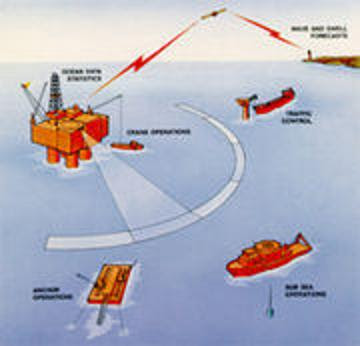

Wind waves can be measured by several radar remote sensing techniques. Several instruments based on a variety of different concepts and techniques are available to the user and these are all often called wave radars.
Instruments based on radar remote sensing techniques have become of particular interest in applications where it is important to avoid direct contact with the water surface and avoid structural interference.
A typical case is wave measurements from an offshore platform in deep waters with the presence of high currents making the mooring of a wave buoy enormously difficult. Another interesting case is a ship in transit where having instruments in the sea is highly impractical and interference from the ships hull must be avoided.




















